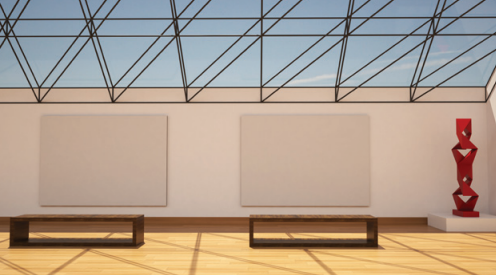Modern Art
The birth of modernism and modern art can be traced back to the Industrial Revolution, a period that lasted from the 18th to the 19th century. During this period, there were rapid changes in manufacturing, transportation, and technology. These changes profoundly affected the social, economic, and cultural conditions of life in Western Europe, North America, and eventually the world. New forms of transportation were invented, including the railroad, the steam engine, and the metro. These new forms of transportation changed the way people lived, worked, and travelled, both at home and abroad, expanding their worldview and access to new ideas. As urban centres prospered, workers flocked to cities for industrial jobs, and urban populations boomed.
Prior to the 19th century, artists were most often commissioned to make artwork by wealthy patrons or institutions, like the church. Much of this art depicted religious or mythological scenes that told stories and were intended to instruct the viewer. During the 19th century, many artists started to make art about people, places, or ideas that interested them, and of which they had direct experience. With the publication of psychologist Sigmund Freud’s ‘The Interpretation of Dreams’ (1899), and the popularisation of the idea of a subconscious mind, many artists began exploring dreams, symbolism, and personal iconography.
Challenging the idea that art must realistically portray the world, some artists experimented with the meaningful use of colour, non-traditional materials, and new techniques and forms. One of these was photography in the 1830s, an invention which allowed a new way of depicting and reinterpreting the world. The Museum of Modern Art collects work made after 1880, when avant-garde artists took their work in new, unexpected, and “modern” directions.
Adapted from the Museum of Modern Art website

